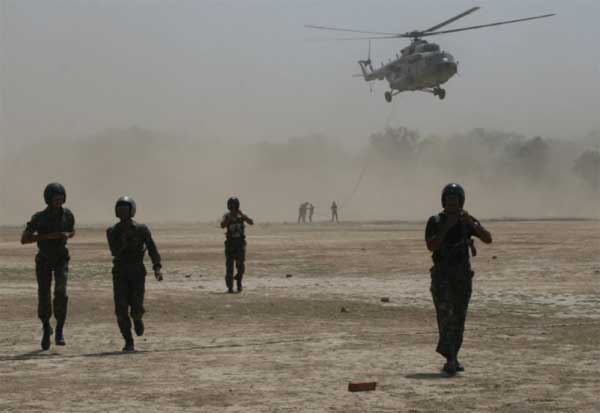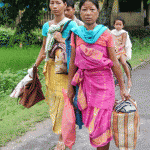Russian citizens gathered in Volgograd (erstwhile Stalingrad) in February 2018 to celebrate the 75th anniversary of the conclusion of the Battle of Stalingrad (23 August 1942 – 2 February 1943), largest confrontation of World War II, in which Germany and its allies fought the Soviet Union for control of the industrial city of Stalingrad in Southern Russia. The battle resulted in Soviet victory and turning point of Hitler’s dream of world conquest. By February 1943, Russian troops had retaken Stalingrad and captured nearly 100,000 German soldiers, though pockets of resistance continued to fight in the city until early March. This was a typical example of urban warfare of that era. Today, global players have no compunctions in using foreign territory as part of geopolitical power play, targeting cities and towns, including using terrorists and mercenaries, testing latest weaponry, even chemical attacks, promoting own weapon sales and employment through reconstruction post the devastation.
Urbanization is progressing faster in developing countries compared to the developed world. In India, percentage increase of urbanization went up from 29.91% in 2007 to 33.54% in 2017. By 2050, nearly two-thirds of global population of 9.7 billion is expected to live in cities. Demographic trends and violence, domestic political power dynamics and changes in character of armed conflict have brought urban warfare into prominence; where combatants can hide more easily is markedly different from combat in a more open or defined theater of operations – taking many forms, from guerrilla attacks to militia patrols to gang violence. This type of combat is different from that in open at both operational and tactical levels. Opponents can hide in basements and tunnels while booby traps, mines, IEDs and snipers can make life hell for the attackers. It is difficult to distinguish ‘combatants’ among civilians like armed militias and associates. Attacker needs three dimensional application and large manpower to secure structures, fortified bunkers and utility tunnels.
Indian experience in urban warfare has been limited. India launched air attacks in March 1966 to liberate Aizawal from Mizo National Army using heavy machine gun fire and dropping incendiary bombs, followed by ground attack to recapture Aizawal and other cities, albeit Aizawal didn’t have structures like a city of today. In May 1973, three battalions of Provincial Armed Constabulary in Uttar Pradesh mutinied for better pay, work conditions etc. Army was called in to control the mutiny, replete with tanks and armoured personnel carriers. Some 30 revolting policemen died in the fighting and hundreds were arrested. Other than this, the Indian experience in urban warfare has been deployment of Army component of NSG in response to the 26/11 Mumbai terrorist attacks, Army/Army component of NSG deployment to eliminate terrorists/militants holed up in Akshardham and Golden Temple, and security forces used against terrorists holed up in built up areas of J&K. It may be recalled that when TV showed President Zail Singh visiting Golden Temple 10 days after the assault on it, firing could still be heard in adjacent buildings. However, all this is nothing compared to urban combat in Iraq and Syria.
Global focus on urban warfare is indicative from several countries establishing simulated urban training zones. The British Army has established an ‘Afghan village’ within its Stanford Battle Area. In France, the Centre d’entrainement aux actions en zone urbaine (CENZUB) is a purpose-built facility for training French armed forces in urban warfare skills. British Army units have also used this facility while learning French urban tactics and using French equipment. Israel’s Urban Warfare Training Center comprises of over 600 individual structures, simulating an authentic, modern Arab city; it includes eight-story-high apartment complexes, shabby shacks, schools, city-stores, public buildings and market places. Many other similar training centres have been established over last year and Israeli Defence Forces (IDF) train regularly at these facilities. Significantly, IDF’s civilian-to-terrorist death ratio is lowest in the world; for every 30 terrorists killed, there is only one civilian casualty despite terrorists using civilians as ‘human shields’. In order to combat such terrorist methods, IDF has focused on how to fight efficiently in urban areas.
It is common knowledge that the rise of ISIS was supported by countries like the US and Saudi Arabia, which they ended up fighting eventually. In urban battles ISIS put up stiff resistance despite numerically superior and better equipped opponents, who were backed with superlative airpower and control of skies. Battles raged simultaneously above and below ground level, with latter involving intricate labyrinth of tunnels that ISIS used for surprise attacks. ISIS made extensive use of drones for surveillance, monitoring and armed drones to inflict casualties. In addition was their employment of snipers, mines/IEDs and suicide vehicle-borne IEDs (SVBIEDs). Drones were also used as area-denial weapons, with two to three drones rotating attacks on a position. Media was used extensively to attract thousands of recruits, even reverting some to parent country and act as ‘sleeper cells’.
If the sudden capture of Mosul surprised the world, ISIS started production of weapons, IED manufacture at huge scale, arming commercially off-the-shelf drones, amassed stockpiles of supplies and huge amount of finances by selling oil and construction of extensive defensive lines on edge of cities involving barricades, trenches, and bunds with weapons emplacements. ISIS grouped most of its forces during defensive urban battles into small, squad-sized units of six to twelve men. These units would stage attacks and raids on enemy positions, while regularly infiltrating into liberated neighborhoods, enabled by an extensive network of mouse holes and tunnels. Eventual victories came at a cost for the attacker; some units of the ISF’s elite counterterrorism force reportedly suffered up to 50% casualties.
The rise of non-state actors has added another significant dimension to urban warfare, where global political violence is more in cities and towns. From urban riots and endemic urban violence in Af-Pak, terrorist organizations like ISIS, Boko Haram, Al Shabaab, Al Qaeda, Haqqanis, LeT and many others are wreaking attacks around the world. Armed groups, insurgents, terrorists, and criminal gangs are managing violence in a manner unseen and unheard in the past. In recent years, world’s most violent conflicts have been witnessed in cities like Aleppo, Raqqa, Mosul, Marawi, Gaza, Mogadishu, Donetsk, Saana, and many others ravaged, with conventional state forces fighting against armed groups that exploit the urban terrain to make up for their relative weakness. Despite, about 25,000 US-ISAF forces present in Afghanistan and the stated resolve to keep Kabul safe, the city is witnessing waves of periodic bombings.
Apparently, urban warfare remains low priority In India because traditionally we wake up only after being hit. MoD is acquiring the National Advanced Surface to Air Missile System-II (NASAMS-II) costing $1 billion. According to a MoD official, the NAMAS-II system is to complement other systems like the S-400 Triumf being procured from Russia. NAMAS-II reportedly is ineffective against hypersonic missiles, but the deployment of indigenous BMD appears to have been delayed to facilitate import of the NAMAS-II, even though Delhi ‘does’ have air defence cover in absence of these. No doubt the strategic experts sitting in high places like the MoD are expected to aim high and therefore only look skywards. But it would do well to also look at ground level.
Full-fledged urban combat maybe distant but are we prepared for terrorists holed up in multiple locations in a large cities like Jammu, Pathankot, Gurdaspur, Ghaziabad, Delhi, Raipur, Rajkot etc and keep switching loca? Yes, it will be dumped onto the Army as first respondents as always, with police commandeered to escort MoD officials to reach home, but perhaps we need to look at the issue holistically, with Asim Umar heading AQIS specifically calling for IAS and IPS officers to be targeted. About time we look at urban warfare more seriously.





